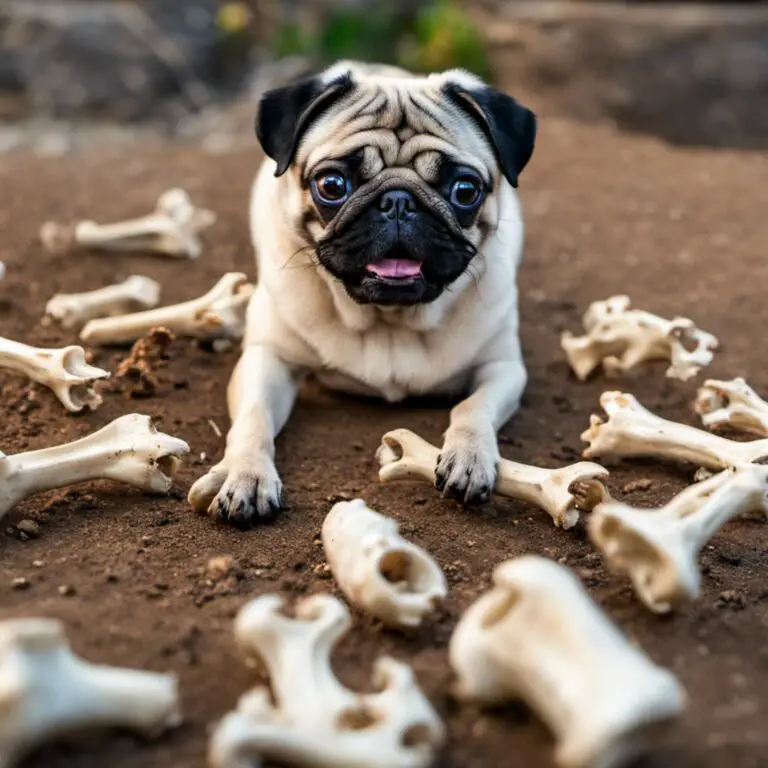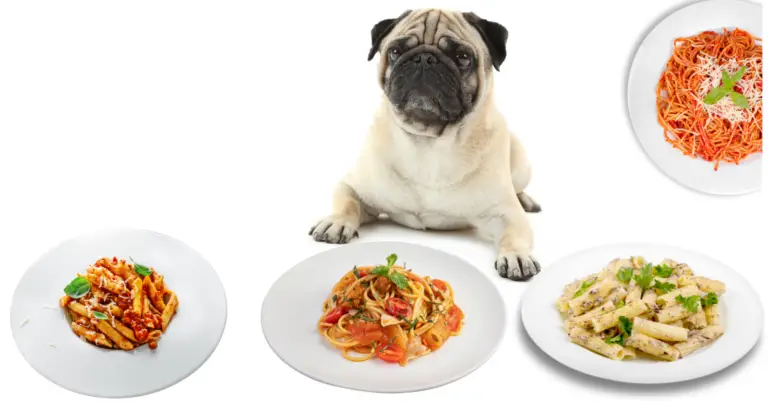Can Pugs Eat Peaches: Unveiling the Truth for Pet Owners

When it comes to feeding your pug, you may wonder if certain fruits are safe for them to consume. Can Pugs Eat Peaches? The good news is that pugs can indeed eat peaches in moderation, as they can be a tasty and nutritious summer treat for our furry friends.
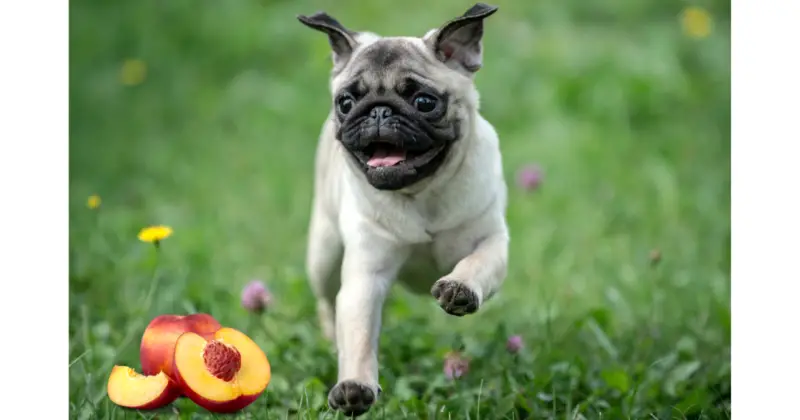
Peaches provide various health benefits for your pug, as they are a great source of vitamins A, C, fiber, and antioxidants source. However, taking some precautions is essential when feeding your pet peaches. The main concern is the peach pit, also known as the stone, which contains a sugar-cyanide compound called amygdalin source. Be sure to remove the pit before giving peaches to your pug, as ingesting it could pose health risks.
Offering small, bite-sized pieces of peaches as an occasional treat will help keep your pug’s diet diverse and enjoyable while ensuring their safety. Just remember to keep the portions moderate, as too much of anything can lead to potential health issues over time. You can satisfy your pug’s taste buds and support their overall well-being with the right balance.
Contents
Table of Contents
Are Peaches Safe for Pugs?

Understanding Peach Toxicity
Peaches are safe for pugs to consume, but moderation is key as with any treat. A peach is a nutritious fruit that offers vitamins A and C, fiber, and antioxidants to your furry friend source. However, it’s crucial to understand that although the fruit itself is not toxic, other parts of a peach can pose hazards for your pug.
Get The Free Food Eating Guide That Keeps My Pug Happy and Playful Even at 13 Years Old
100% Beginner Friendly & Lists Real Foods Your Pug Can Actually Eat!

Importance of Removing Peach Pits
The peach’s pit, or stone, contains cyanide traces, making it dangerous for your pug if ingested. It is essential to remove the peach pit before feeding any portion of the fruit to your dog. Additionally, the pit poses a choking hazard; if swallowed, it can lead to blockage in their digestive system source.
Here are some quick tips for preparing peaches for your pug safely:
- Remove the pit: Always remove the peach pit before offering the fruit to your pug.
- Wash the peach: It is important to clean the peach thoroughly to remove any pesticides or contaminants.
- Remove the skin: Although not strictly necessary, removing the peach’s skin might be best. The skin can be tough for your pug to digest and may cause gastrointestinal issues.
- Watch portion sizes: Peaches contain sugar, so feeding them in moderation is essential to avoid potential digestive problems source.
Keeping these tips in mind and preparing peaches properly ensures that your pug enjoys a nutritious and safe treat. Remember, moderation is essential, and consult with your veterinarian if you have any concerns about your pug’s diet.
Potential Health Risks

Choking and Intestinal Blockages
Feeding your pug peaches can sometimes lead to choking and intestinal blockage risks. The peach pit, in particular, is a potential hazard, as its size and shape may cause choking or block your pug’s digestive system if swallowed. To minimize these risks, always remove the pit before giving your pug peach pieces to enjoy.
Cyanide Poisoning in Pugs
Another concern when feeding peaches to your pug is cyanide poisoning. Peach pits contain a sugar-cyanide compound called amygdalin1. Although your pug would need to consume a large number of peach pits for this to become a life-threatening issue, it’s still essential to be cautious. Always make sure to remove the pit from the peach before feeding it to your pug.
Unwanted Digestive Problems
Peaches may also cause digestive problems in some pugs. Remember that peaches have a high sugar content, which can lead to obesity or diabetes2 if consumed excessively. Furthermore, overeating peaches may cause gastrointestinal issues such as constipation, diarrhea, or vomiting.
To avoid these problems, feed your pug peaches only in moderation and closely monitor their reaction to the fruit. If you notice any signs of discomfort or adverse effects, discontinue feeding peaches to your pug and consult your veterinarian.
Nutritional Benefits of Peaches

Vitamins and Minerals in Peaches
Peaches are a delicious and nutritious fruit that can be a healthy addition to your pug’s diet. They are packed with essential vitamins and minerals that can boost your pet’s overall health. Peaches are rich in vitamins A and C, which are known for promoting a healthy immune system. Vitamin A plays a vital role in maintaining good vision and healthy skin, while Vitamin C helps heal wounds and fight infections.
Additionally, peaches contain other important mineral elements like potassium, magnesium, and phosphorus. Potassium helps balance electrolyte levels and regulate muscle functions, whereas magnesium and phosphorus contribute to strong bones and teeth.
Nutritional Comparison with Other Fruits
When comparing the nutritional value of peaches with other fruits, it is worth noting that peaches are relatively low in calories. This makes them a good option for pugs who need to maintain a healthy weight. Peaches are also a good source of dietary fiber, which can aid digestion and keep your pug feeling full for longer periods, ultimately preventing overeating.
While some fruits like kiwi and oranges have higher Vitamin C content, peaches still provide a decent amount of this essential nutrient. Regarding fiber, peaches have a similar amount as other fruits like apples and pears. Incorporating peaches into your pug’s diet can contribute to a well-balanced, nutrient-rich meal plan.
By understanding the nutritional benefits of peaches and how they compare to other fruits, you can make informed decisions about feeding your pug a diet that supports their health and well-being. Remember to always remove the pit and skin from the peach before giving it to your pug to prevent choking hazards.
Feeding Tips for Pugs
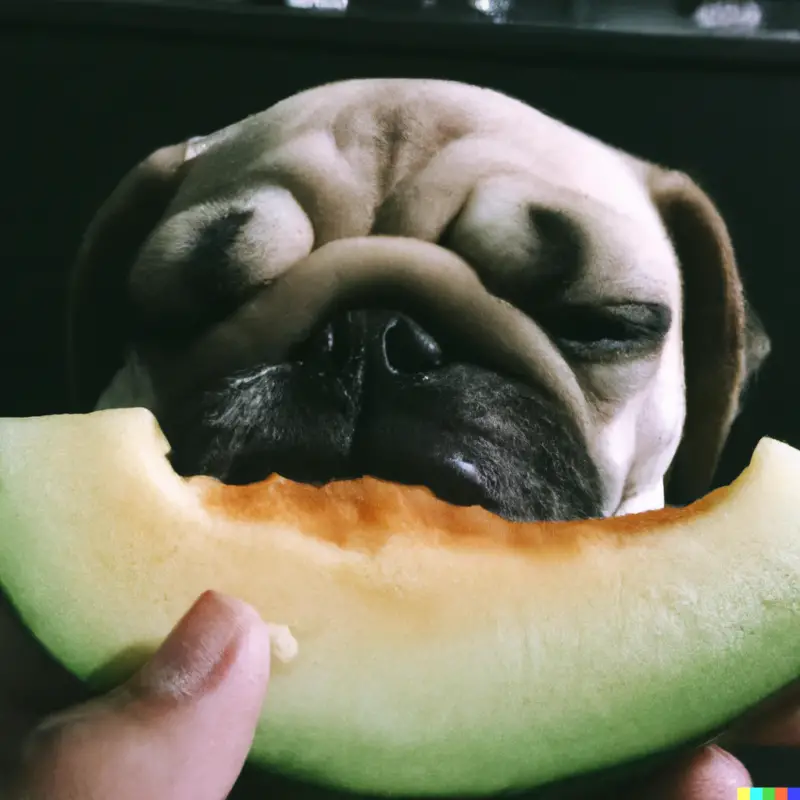
Moderation is Key
When it comes to feeding your pug, moderation is crucial. Although pugs can safely eat some fruits and vegetables, including peaches, keeping these as an occasional treat is essential. Your pug’s primary diet should consist of high-quality dog food designed for their specific needs.
Human Food as a Treat
Providing human food to your pug, such as fruits and vegetables, can be an excellent way to mix up their diet and offer additional nutrients. However, it’s crucial only to give them as an occasional treat. Overfeeding your pug with human food can lead to weight gain and other health issues. Remember that not all fruits and vegetables are safe for your pug, so always ensure you know which ones are.
Proper Ways to Serve Peaches
Peaches can be a delicious and nutritious treat for your pug, but serving them correctly is essential. When offering peaches to your pug, follow these guidelines:
- Wash the peach: Ensure you thoroughly wash the fruit to remove any residual pesticides or dirt.
- Remove the pit: Peach pits can be a choking hazard and contain traces of cyanide, which is toxic to dogs. Always remove the pit before feeding the peach to your pug.
- Peel the skin: The skin can be difficult for your pug to digest, so peeling it off before serving is best.
- Cut into bite-sized pieces: To prevent choking and make it easier for your pug to eat, cut the peach into small, bite-sized pieces.
Incorporating peaches and other safe fruits and vegetables into your pug’s diet can give them valuable nutrients and variety. Just remember to practice moderation and always check that the food you are providing is safe for pugs.
Can Pugs Eat Peaches? Watch this
Other Fruits Pugs Can Eat
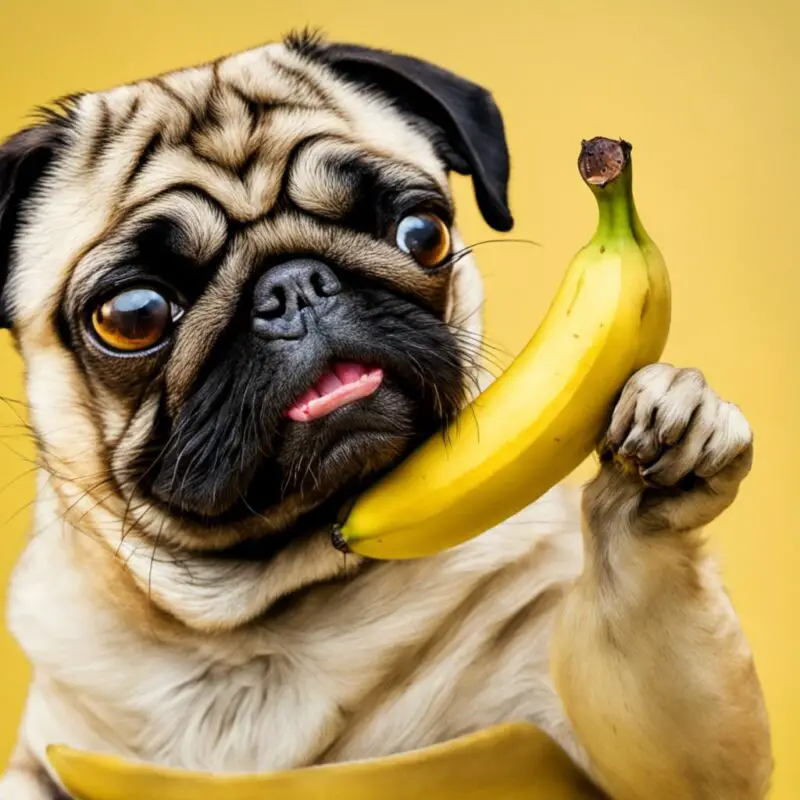
Alternatives to Peaches
If you’re looking for other types of fruits your Pug can safely eat besides peaches, there are several options. Apples, for instance, are a nutritious choice as they provide vitamins A and C as well as fiber, which can benefit your Pug’s digestion source. Just make sure to remove the seeds and core before feeding apples to your Pug.
Bananas are also a good choice, rich in potassium, vitamin C, and vitamin B6, but they should be given in moderation due to their sugar content. Blueberries and strawberries are full of antioxidants, fiber, and vitamins, making them great for your Pug’s immune system and overall health. Mango, oranges, and pears are other fruits you can safely feed your Pug, as long as seeds and pits are removed and the fruit itself is thoroughly cleaned.
Consequences of Feeding the Wrong Fruits
However, it is important to avoid feeding your Pug certain fruits, as they can be harmful or even toxic. Grapes and raisins, for example, must be avoided, as they can cause kidney failure in dogs. Likewise, cherries, plums, and avocados are also not suitable for Pugs because their pits and seeds can be dangerous, and the flesh of avocados might cause an allergic reaction source.
Feeding your Pug the wrong fruits could lead to symptoms like vomiting, diarrhea, weakness, or even more severe issues such as kidney problems or cancer in some cases. To keep your Pug safe and healthy, always research the specific fruit you want to feed them and ensure it is appropriate.
Remember to gradually introduce new fruits or changes to your Pug’s diet, and always feed them in moderation. This will help avoid any potential upset stomach or digestive issues. And, as always, consult your veterinarian if in doubt or if you notice any adverse reactions in your Pug after feeding them a particular fruit.
When to Consult the Vet

Spotting Signs of Discomfort or Illness
As a pug owner, monitoring your pet’s health is crucial, particularly when introducing new foods like peaches into their diet. Keep an eye out for any unusual symptoms that may indicate discomfort or illness. Some common signs to look for include:
- Vomiting
- Diarrhea
- Lethargy
- Loss of appetite
- Difficulty breathing
- Seizures
If you notice any of these symptoms or if your pug experiences other health problems, it’s essential to consult your veterinarian immediately. Early detection and treatment can prevent serious complications and ensure your pug’s well-being.
Making Dietary Changes
Moderation is key when incorporating peaches or any other new food into your pug’s diet. While peaches can be a tasty and nutritious treat for pugs, overconsumption can cause digestion issues. Before making any significant dietary changes, it’s wise to consult your veterinarian so they can guide you on the appropriate serving size and frequency.
If your pug shows signs of discomfort or health issues after eating peaches, stop feeding them the fruit and consult your veterinarian. They can help determine whether your pug has an allergy or sensitivity to peaches and advise on alternative treat options.
Overall, attentiveness to your pug’s health and familiarity with the signs of discomfort or illness is key when introducing new foods to their diet. Always consult your veterinarian when in doubt, and stay informed about your pug’s nutritional needs.
Frequently Asked Questions: Can Pugs Eat Peaches

Can dogs eat peach skin?
While the flesh of the peach is safe for dogs to consume, it’s best to remove the skin before feeding it to your pet. The peach skin can be difficult for dogs to digest and may cause an upset stomach. Additionally, some pesticides that may have been used on the peach can remain on the skin, posing potential health risks.
Are peaches safe for dogs?
Yes, peaches are generally safe for dogs to eat in small amounts and in moderation. However, you should always remove the pit, stem, and skin before giving peaches to your dog. The peach pit contains cyanide, which is toxic to dogs and can cause severe health problems if ingested.
Do peaches have any health benefits for dogs?
Peaches provide vitamins A and C, fiber, and antioxidants for dogs, which are important for maintaining a healthy immune system and overall health. Including peaches in your dog’s diet occasionally can offer these health benefits, but always remember to feed them in moderation.
How should peaches be prepared for dogs?
When feeding peaches to your dog, make sure to wash the fruit thoroughly to remove any pesticide residue or dirt. Next, remove the pit, stem, and skin, then cut the peach into small, bite-sized pieces. This will help prevent any choking hazards and make it easier for your dog to digest the fruit.
Are there any risks to feeding peaches to dogs?
The primary risk associated with feeding peaches to dogs is the ingestion of the peach pit, which is toxic and can lead to serious health complications. Additionally, overfeeding peaches could lead to an upset stomach or other digestive issues due to their sugar content. Always feed peaches in moderation and monitor your dog for any changes in their behavior or digestive health after consuming the fruit.
What other fruits can dogs eat?
Many fruits are safe and nutritious for dogs, such as apples, bananas, blueberries, and watermelon. Like with peaches, always remove any pits, seeds, or inedible parts of the fruit and cut them into small, bite-sized pieces. Feeding your dog a variety of safe fruits in moderation can offer a range of health benefits and add variety to their diet.


